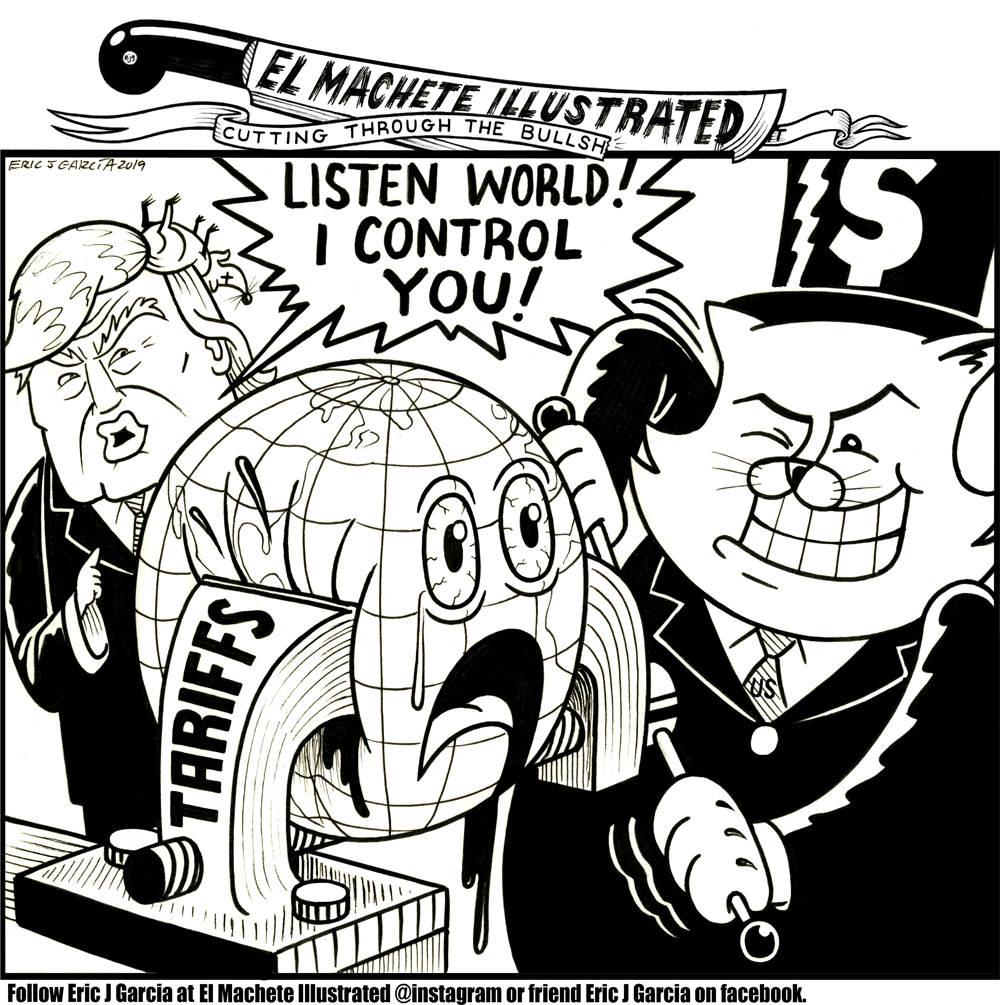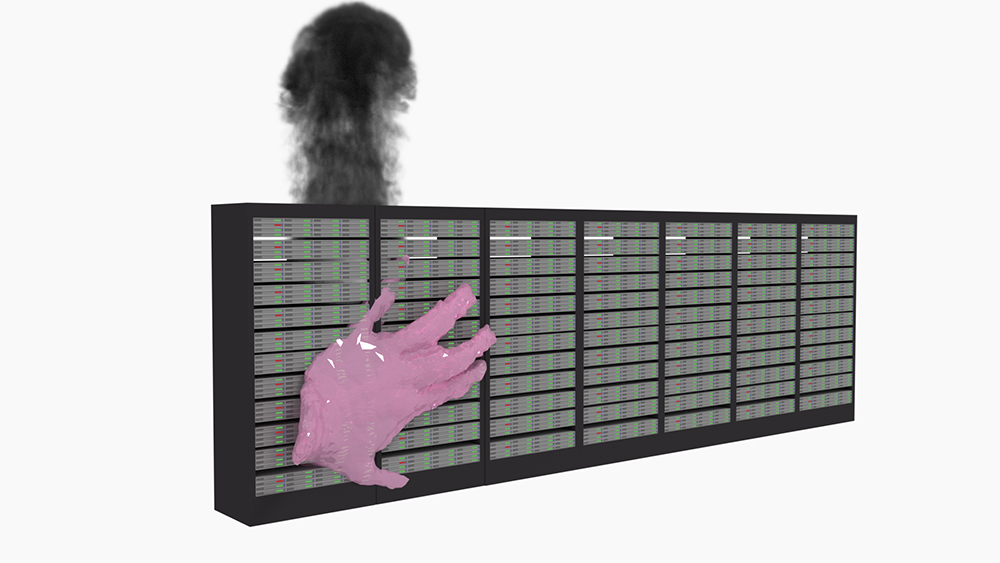
The International Museum of Surgical Science (IMSS) showcases historic and unsettling tools that have been used on bodies to practice medicine. Gleaming scalpels and oversized pliers are centered, but the body is always looming in a sculpted bust or painted mural. Jon Chambers, Lecturer in the Department of Film, Video, New Media and Animation at the School of the Art Institute of Chicago (SAIC), recently completed a residency at the IMSS that culminated with the show, “The Practical Applications of Networks to the Body.” The show centers technology, but the corporations and governments collecting our data loom just out of view. Chambers researched early writings about electricity in medicine to think about the force of technology in our lives and its supposed benefits. We met recently to discuss the residency, communicating off the grid, and trying to stay optimistic about digital literacy.
Kristin Leigh Hofer: What was it like to work with the International Museum of Surgical Science?
Jon Chambers: When I was interviewed for the residency they were really interested in my work with the body through my body scans and videos. I think they thought it would be a good mix with the museum, of course, with its relationship to the body and the history of medicine. They had this NeuroTouch simulator that had recently been donated and they wanted to know if I was interested in using it. It’s a neurosurgery simulator, similar to VR. There are two motors on the object and the system uses haptic feedback, so you’re prodding this VR brain and getting resistance. I didn’t hack into the motors or anything because they wanted to use it afterwards.
KLH: Did you want to hack into it?
JC: I was thinking about taking the motors and interfacing them with an Arduino to create an interactive screen-based application, but I didn’t want to unplug anything.
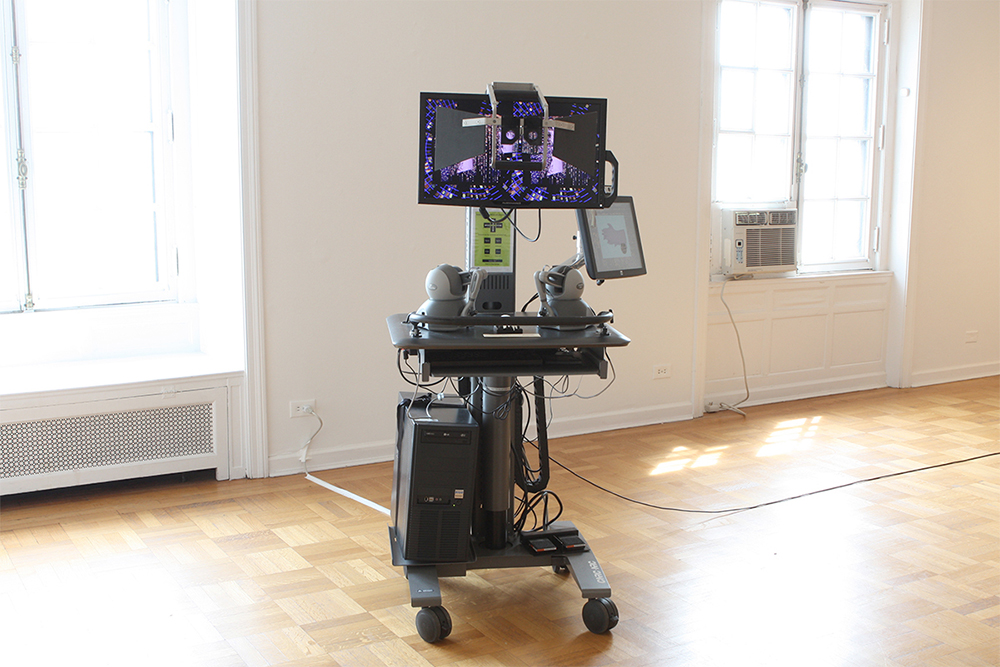

KLH: Well, it is interactive in its form right now.
JC: Right, but you can’t touch it. You can look through it and there is the facial recognition app on one of the screens. It’s a cool, weird contraption. After looking at that I started researching the early devices in their collection that used electricity. They have a beautiful library with old books, like a 15th century illuminated manuscript, and a few “new” books from the 1890s about electricity. They didn’t really know what electricity was then, but they began experimenting with it in medicine. That started this idea for me of interfacing the body with network and electrical systems.
KLH: Is that where you became interested in the diathermy machine?
JC: Yes. It’s weird, because they didn’t really know what it was then. It’s like the wild west of electricity. The title of the show is a riff on this book called “Practical Electricity in Medicine and Science” and at the very beginning of the book the author says, “we’re not here to talk about whether electricity is one fluid or two fluids.” They thought it was this fluid. They didn’t really know what electrons were, but they knew the properties of electricity. The book has a lot of images of people’s faces being prodded in order to see what muscle would spasm. There is a weird metaphysical relationship to it, this exchange of the fluids between a machine and the body. I was thinking about the strange, magical relationship with electricity and today’s relationships with technology. We have the myth of the cloud, this terrible metaphor for what it is and what the technology is actually doing. We still interface with electricity all the time in these invisible ways.
KLH: You made a video called “Symbiosis” in 2017 using 3D scans of your body and dismembering them into pieces and embedding them into, you wrote, “nonrepresentational landscapes and spaces using data centers and nebulae as textures and shaders.” Where does this data come from?
JC: That video was more about using the aesthetics of data centers as a texture for the models in the backgrounds. Thinking again about this mystical, grand space and relating it to the idea of the cloud. Those aren’t obvious textures, but they are in the background to create depth. The video starts off with a torso rotating, and maybe it’s sort of obvious what it is, but as the video goes on it starts to be integrated into this system. The data is also a reference to the fact that the body becomes data when it is scanned. So, there is no literal data coming through that piece, but I always think of the scans as data.
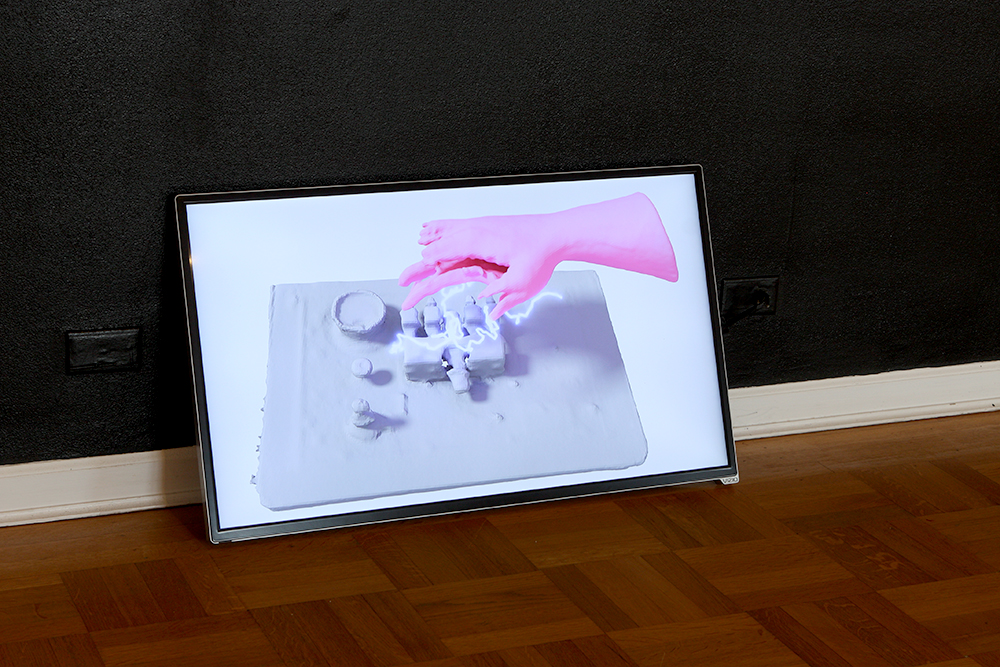
KLH: Can you tell me about your project Clumzy and Lean Artist Chicago?
JC: That was a project through Jeremy Bailey, an artist out of Toronto. He has a project called “Lean Artist” that asks artists to utilize start-up culture as a way to disrupt that space. It was part of the Museum of Contemporary Art exhibition “I Was Raised on the Internet,” and Clumzy was my contribution to the project. It is a decentralized way of communicating off the grid and away from data collection. The whole process [of designing a product] was new for me. The target audience was millennials, so I interviewed a few of my students about their relationship with the Internet. The product is a peer-to-peer device that will connect to other devices that are close by. When you squeeze it, it sends a signal to the other Clumzys that are nearby, which then vibrate and change color depending on how long and how hard you squeeze it for. I was thinking about stress-relief products that you squeeze, so the shape of it comes from a scan of my palm. The protocol is open-ended; you can use Morse code or come up with your own personalized ways of communicating with each other. The whole point was to make a peer-to-peer decentralized network of devices that works completely off the grid and resists surveillance. It’s an ergonomic, squishy device, because I was thinking about alternate designs for devices outside the rectangle. But after I made the prototype I had an existential crisis. Should I put another techno-object out into the world? Do I have to exploit labor to make this happen? It’s on hold for now, but I think I want to revisit it and see if it would be possible to ethically create these. Is it even possible to have an object that is ethically produced? I don’t think so. Maybe it becomes more of a research project. I really love this project and learned a lot, but then I had this moment and asked myself, what am I doing? Do I want to do this? Do I want to mass produce an object? I’m still thinking about it.
KLH: You graduated with a BFA in 2005 and an MFA in 2012. There is a huge jump between 2005 and 2012 in personal technology. How did your work change in that time? Was that interest in technology always there?
JC: For undergrad, I went to Grand Valley State University where I started as a painter before moving into sculpture, which was more open-ended. I started getting into video installations and early video art, especially Bill Viola, who was a huge influence on me. My BFA piece was a very 1970s-feeling video and sound installation. I took a few years after school and did a bunch of stuff: got married, bought a house, got a job. I was still thinking about the body and perception, but also about new technology and the Internet.
KLH: Had you ever done any coding before?
JC: No. I took a class about how to build a website, which is where I started thinking about the web as a medium, late in the game maybe. I began making work on the web and was coming up against cognitive walls where I couldn’t figure out how to do something. I knew I wanted to go back to grad school to learn more about this kind of stuff, so I started building a portfolio more related to web-based work. My work has always been about the body, or some sort of interface with the body, even if it’s as vague as electricity and light. I got my first cell phone in 2006 or 2007 and had such a strange relationship with it. It’s remote but connected at the same time. When I got to grad school I dove right into coding. I had a really great advisor, Daniel Sauter. That’s where I learned all this stuff about Arduino, processing, and web-based work.
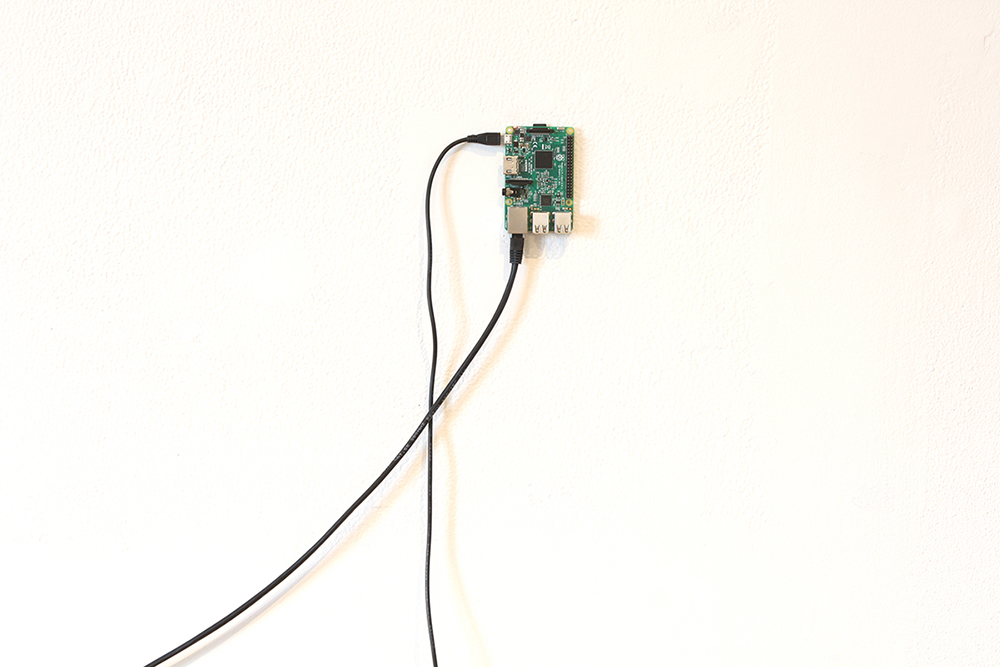
KLH: How would you define technological literacy?
JC: I think it’s really important to not only know how the systems work, or how to use your computer, but also how they’re working for and against you. It should be taught in middle school and high school. In my intro [New Media] classes I try to focus on it a lot. First, we learn how to use the computers, because a lot of students come in and don’t know how to find a file. After that we start getting into the coding part and talk about how Google and Facebook actually work. Then we open up the console and the inspect element so we can see the code — what the website is made of. It’s insanely important and I try to bring [digital literacy] into my classroom a lot through readings, artists, and workshops. I want them to be thinking about this relationship, not just letting the media pass over them. I want them taking control and generating content.
KLH: What do you mean by that?
JC: Not just consuming the content, but also producing it. It can be as simple as making your own videos to promote your ideas on YouTube, but it should also be disrupting the systems and thinking about them critically. I think that criticality is the important part that needs to be taught through digital literacy. I don’t want to just be like, “this is how it is,” because it doesn’t have to be this way. There’s so much more to the Internet than Facebook and Google. There are privacy tools, different browsers and search engines. All that stuff is super important to teach these younger artists and students. At SAIC, for instance, they make the students buy Macs, right? Let’s talk about this object, because the hardware is not a neutral space. There are politics injected into it. They’re making sure you’re using it the way they want you to be using it. If you go with Linux you can do whatever the fuck you want. You can build your own computer and install whatever operating software system you like. It’s a higher learning curve, but there are two machines you can use: one of them is completely controlled, you can’t even change your battery anymore; the other one is completely open source. Which one is the utopia? Students have to buy these computers and SAIC is getting kickbacks, I’m sure. I’m trying to catch them up and call attention to the systems of power we don’t often think about.
KLH: I want to wrap up with something I read yesterday. Jia Tolentino recently wrote about a book called “How to Do Nothing” by Jenny Odell. She is talking about how we give parts of ourselves away to tech companies and quotes Odell, saying, “The ‘best, most alive parts’ of ourselves are being ‘paved over by a ruthless logic of use.’” Which seems very related to something you tweeted in August 2018: “tfw mimicking nature in digital systems and simulations helps to destroy the nature it’s mimicking.” Both point out that in the digital sphere the self becomes a simulacrum — a simulation of something that no longer exists. How cynical are you about society’s future?
JC: That’s so funny. That tweet came from seeing all these VR 3D animations of nature, but the churning of this thing is destroying nature. I guess I’m more cynical about this immediate need for digital literacy. People should just stop using Twitter and Facebook, because it’s trash. They’re running on algorithms and messing with the timeline so that time is no longer time. I think Generation Z is more knowledgeable about how shit is working against them and that’s inspiring. I’m optimistic because there are ways to resist, but being cynical is fuel for me to keep making work about these relationships.




